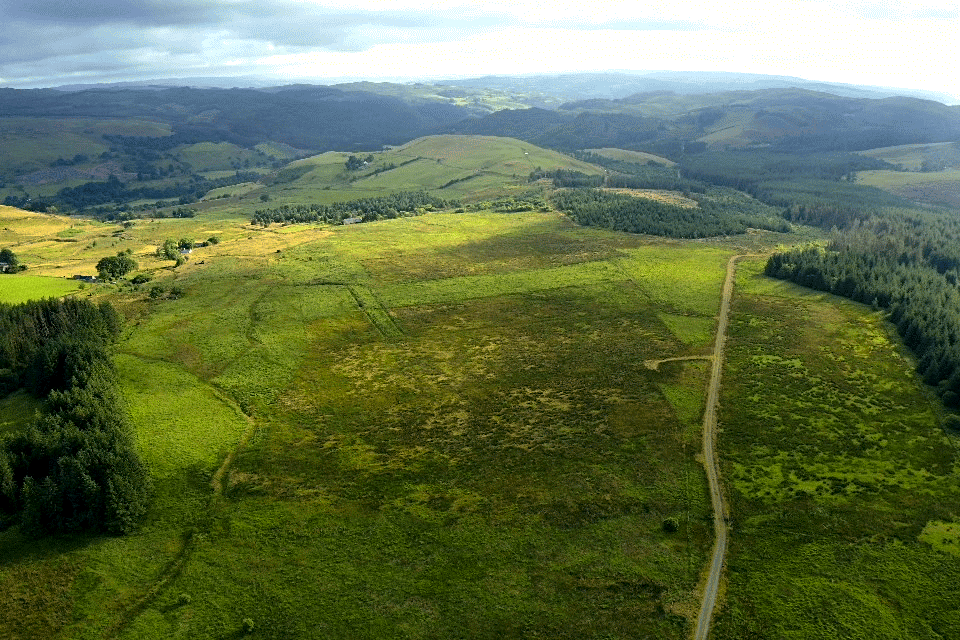Environmental
Processes and resource inputs associated with GGR methods may be associated with environmental concerns or potential benefits. To assess these, we take a holistic approach, considering impacts all the way along the supply chain: from resource extraction and processing to transport and waste disposal, see guidelines for system boundary completeness in Quality of reporting indicators. Otherwise we might miss some of the environmental concerns of a given GGR, or overlook opportunities to improve its processes and co-benefits.
As many GGR approaches involve large-scale land-use, much of the environmental assessment comes down to the impact of different land cover and management practices. For example, how do the agricultural practices in growing ‘biomass’ crops to use for bioenergy with carbon capture and storage (BECCS) compare with current crop production, and what might the impacts be if there was a risk of natural vegetation being converted to biomass crops?
For other land-based GGR we may be primarily interested in potential carbon sequestration from a climate change mitigation perspective, but also interested in assessing wider benefits provided by ecological restoration. These co-benefits can include facilitation of nutrient cycling, and ecosystem resilience provided following the recovery of biodiversity, for example.

Approach
To track and assess impacts of material flows and processes along the supply chain, we use the principles and methodologies of Life Cycle Assessment (LCA). This involves constructing a ‘life cycle inventory’ from which indicators can be generated across a range of impact categories.
To appraise land-use based impacts, we use a range of methods including local data collection and environmental modelling. This requires location, state and time-specific data and methods. For example, soil erosion risk could be assessed based on agricultural practices for bioenergy crops or tree-planting, incorporating site-specific data on soil type and precipitation. Even more detail may be considered in biodiversity assessments, where different land-uses and management intensities affect ecological functioning relative to an intact ecosystem.
Where possible, this site-specific detail on land-use and environmental impacts is also extended across the entire supply chain, in addition to the main on-site GGR assessment. This requires as much specificity in the life cycle inventory as possible, and also ‘consequential’ modelling approaches to explore ‘indirect’ impacts. For example, if land-based GGR is deployed at scale, will food prices be affected, and might there be knock-on effects in land-use and associated environmental impacts elsewhere, as a result?
Indicators
Land and sea
A fundamental indicator, with important implications across a number of other environmental impacts, is the amount of land required for a GGR, and the impacts of converting land to this use (as compared to its current state and/or a ‘business as usual’ counterfactual, see the definition of counterfactual). Information on land-use and management can also be used in more detailed site-specific modelling, and is required to explore wider consequences in integrated economic models of land-use competition and food production, for example.
This highlights the need for specificity in land-use to assess how different land-types may be appropriate for different GGRs, with implications for agriculture (i.e. whether they can be deployed on ‘marginal’ agricultural land and the type of farms and farmers that will be affected). Similarly, with sufficient detail in what the GGR land management entails, we can also highlight where practices can be integrated with other land-uses (e.g. agriculture or ecosystem protection/recovery) and the co-benefits provided.
Biodiversity
To quantify biodiversity change, we need to anticipate (and, ideally, eventually measure) how species diversity and abundance changes in response to GGR deployment.
Initially, we can apply existing Life Cycle Assessment indicators of potential species loss based on land-use type and land management intensity. Eventually, we will build on and advance more robust indicator and modelling approaches. Emerging research is starting to suggest more detailed indicators of ecological intactness: species diversity and abundance relative to a natural ecosystem. With further development, these can be tied to indicators of ecosystem functioning, with consequences for specific environmental impact considerations (for example, water, air and soil quality, as below), and ecological stability and resilience of these, supporting the long-term persistence of land-based carbon storage.
Water, air, soil
Different land uses and managements have implications for water, air and soil quality. Activities may have multiple effects across these different impact categories.
Fertilisers applied for GGR (for example, for biomass crops) may be lost to water, resulting in a risk of eutrophication, or to air, with implications for air quality. As an initial approach to generating indicators in this area, Life Cycle Assessment methods commonly take fertiliser inputs and use characterisation factors considering the amount lost and eventual impacts on air or water quality. These can be developed with more detailed and location-specific environmental modelling incorporating further land management information and impacts (for example, erosion risk based on soil type and field operations) to go further along the assessment chain to final impacts.
GGR practices may offer co-benefits in these areas: for example, increasing soil carbon may also enhance soil stability and minimise nutrient losses, or ecological restoration along waterways may reduce the risk of floods occurring downstream. We will work with the demonstrator projects to develop sufficiently broad but detailed land-based environmental models to capture both the risks and benefits of different GGR methods, and how they might be integrated with or facilitate other land-managements and environmental objectives.
Environmental team

Dr Jo House
University of Bristol

Dr John Lynch
University of Oxford
Dr Eleni Michalopoulou
University of Bristol

Prof Michael Obersteiner
University of Oxford

Prof Nathalie Seddon
University of Oxford
Do you have feedback?
Help us refine and improve the Evaluation Framework. Get in touch using the form below or email co2re@smithschool.ox.ac.uk.
